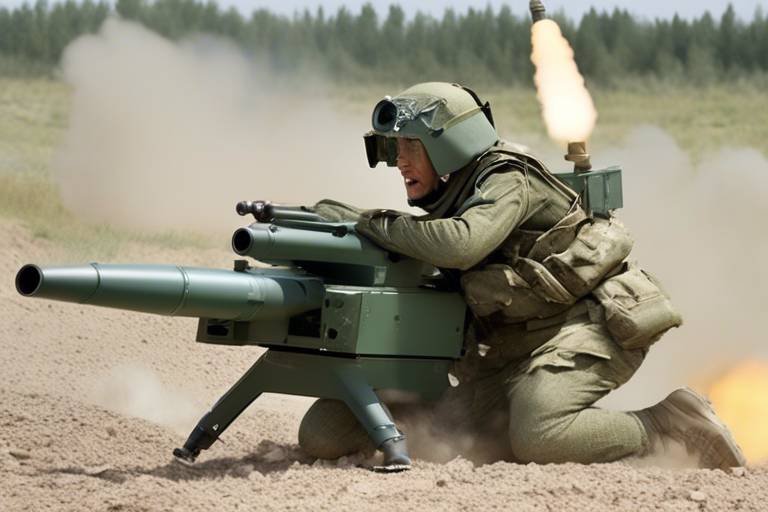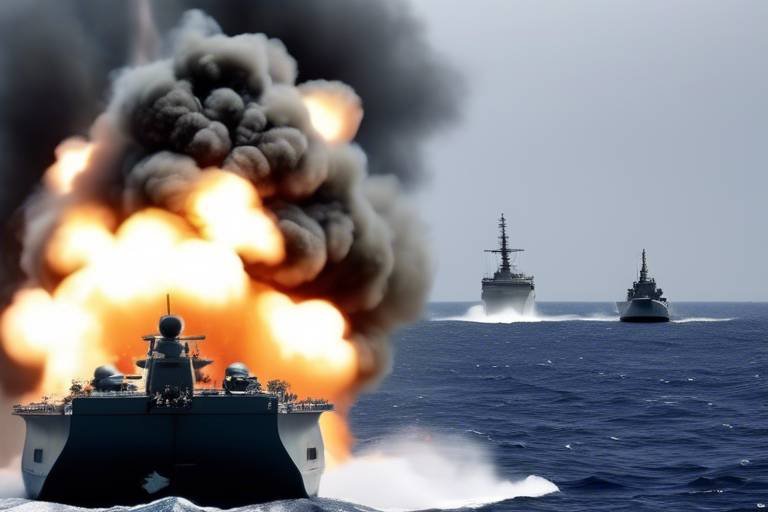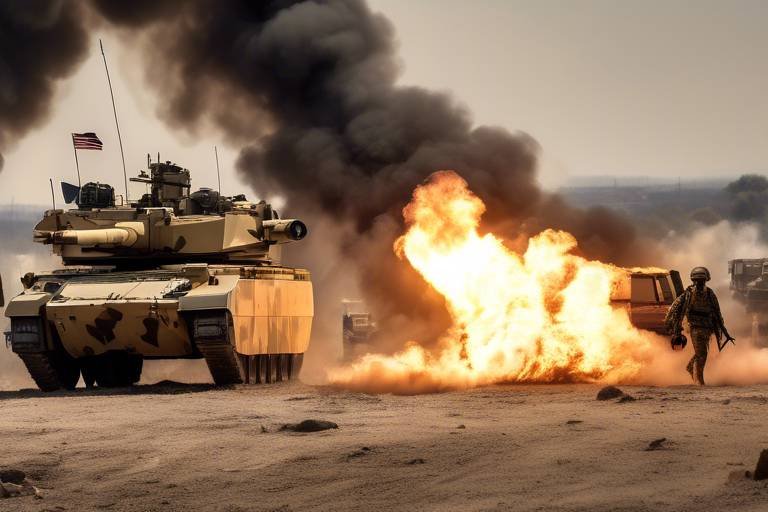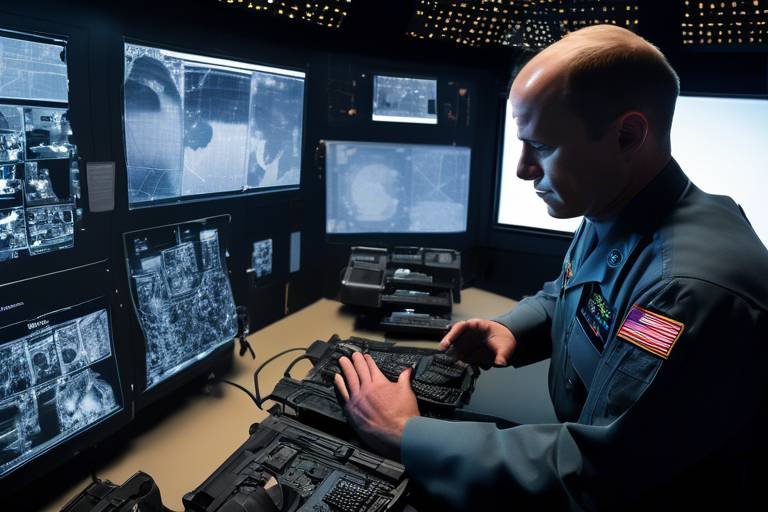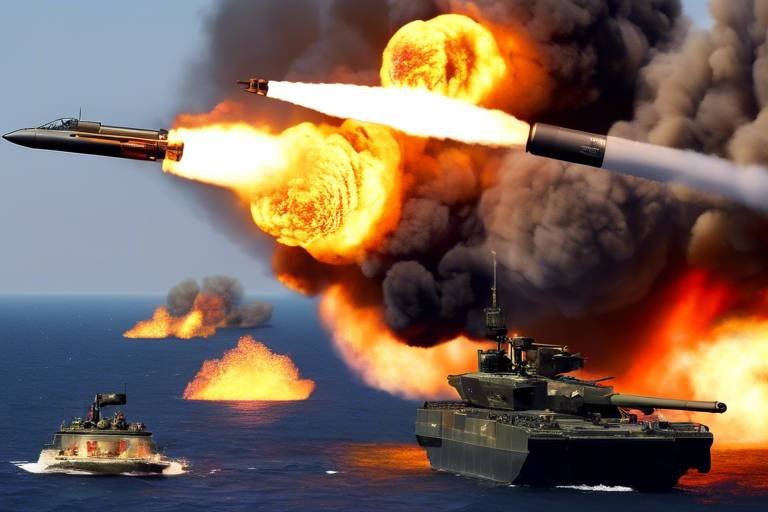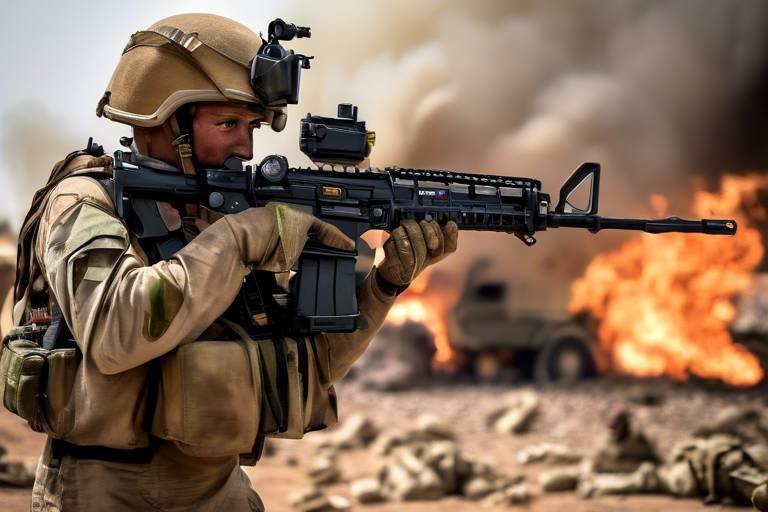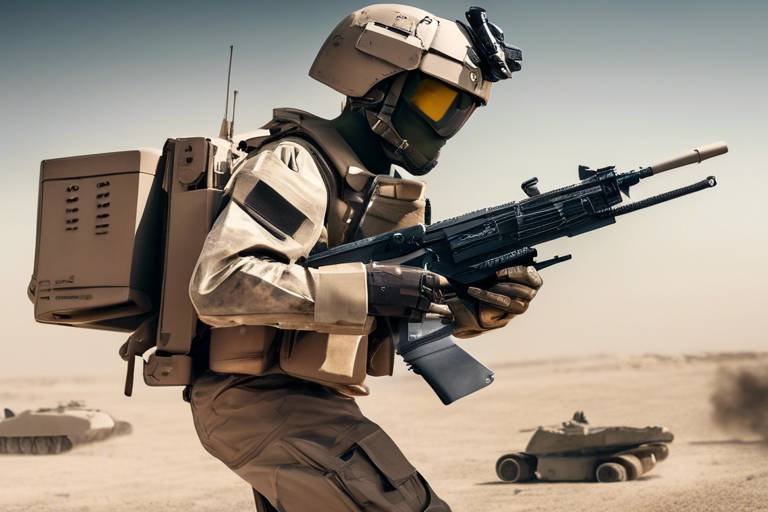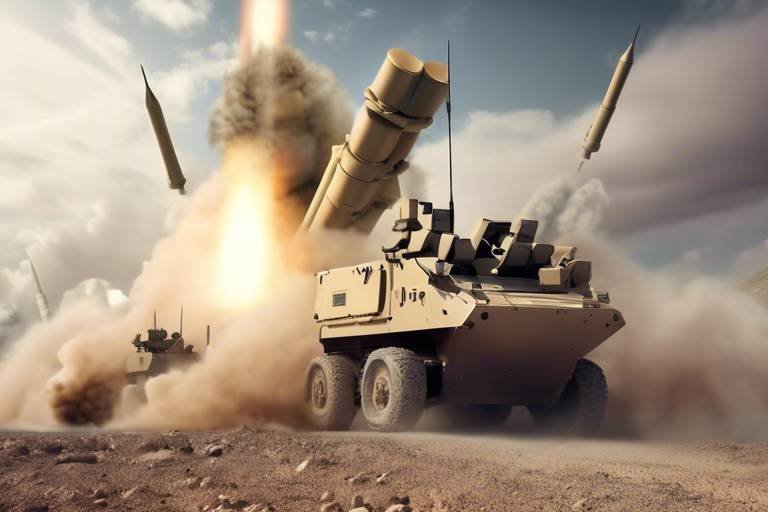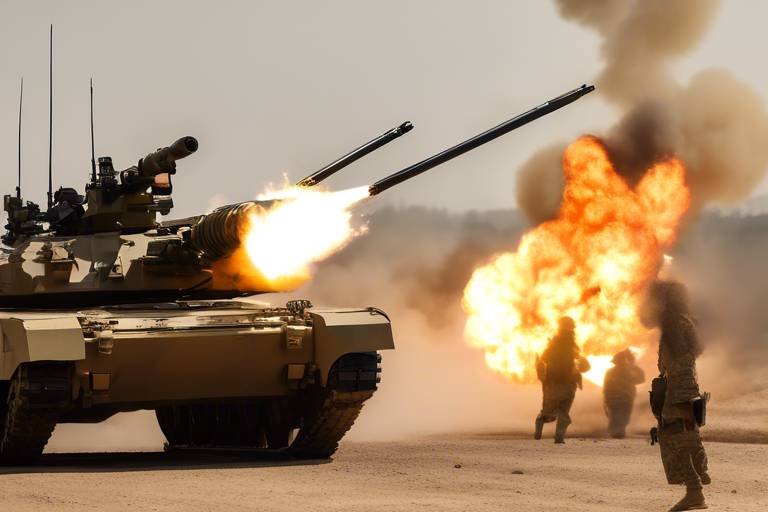The Importance of Training in Effective Firepower Use
Training is not just a box to check off; it's the backbone of successful firepower use across various fields, including military, law enforcement, and civilian applications. Imagine trying to navigate a complex maze without a map—this is akin to using firepower without adequate training. The stakes are high, and the consequences of missteps can be devastating. Effective training transforms raw potential into precise execution, ensuring that individuals and units can respond appropriately under pressure.
Why is training so crucial? First off, it builds confidence. When personnel know they’ve practiced their skills repeatedly, they are far more likely to perform effectively in real situations. Think of it like learning to ride a bike; the more you practice, the more natural it becomes. This principle applies to firepower use as well. Whether it’s a police officer aiming to de-escalate a situation or a soldier engaging an enemy target, confidence gained through rigorous training can mean the difference between success and failure.
Moreover, training enhances team dynamics. In high-pressure scenarios, individuals must work seamlessly together, almost like a well-rehearsed orchestra. Each member has to know their role and how it fits into the larger picture. Training fosters this understanding, allowing teams to operate with precision and efficiency. When everyone knows their part, the likelihood of miscommunication and errors decreases significantly.
Additionally, let's not forget about safety. Proper training includes an emphasis on safety protocols, which are essential to prevent accidents. Just as a pilot undergoes extensive training to handle emergencies, those using firepower must also be prepared for unforeseen circumstances. By embedding safety into every training module, organizations can create a culture of responsibility and care, ensuring that every individual returns home safely.
In summary, the importance of training in effective firepower use cannot be overstated. It is the foundation upon which confidence, teamwork, and safety are built. As we delve deeper into the various types of training methods available, we will see how each contributes uniquely to enhancing firepower effectiveness.
Understanding Firepower
Firepower is a term that encapsulates the ability of a military unit, law enforcement agency, or individual to deliver effective strikes against targets. It's not just about having weapons; it's about how those weapons are utilized in various scenarios. Imagine firepower as a finely tuned orchestra, where each instrument (or weapon) plays its part in harmony to achieve a powerful performance. Understanding the components of firepower is essential for effective training and operational success.
At its core, firepower can be broken down into several key elements that contribute to its overall effectiveness:
- Weapon Systems: This includes everything from firearms to artillery, each with its own specifications and capabilities.
- Accuracy: The precision with which a weapon can hit a target is paramount. Training enhances this skill.
- Rate of Fire: This refers to how quickly a weapon can discharge rounds, impacting the effectiveness of a response.
- Range: Different weapons have varying effective ranges, which must be understood for strategic deployment.
When we talk about understanding firepower, we also need to consider the context in which it is being used. For instance, the firepower required in a military operation can be vastly different from what law enforcement might need during a hostage situation. In military settings, firepower is often about overwhelming an enemy, while in civilian contexts, it’s more about precision and minimizing collateral damage.
The importance of training in understanding firepower cannot be overstated. It's not just about knowing how to pull the trigger; it involves a deep comprehension of tactics, situational awareness, and the psychological aspects of using force. Effective training prepares individuals and teams to respond appropriately under pressure, ensuring that their firepower is not only effective but also safe.
Furthermore, the evolution of technology has transformed the landscape of firepower. With advancements like smart weapons and drone technology, the dynamics of how firepower is deployed have shifted significantly. This is why continuous training and adaptation are crucial. Just as a musician must practice to stay in tune, those who wield firepower must constantly refine their skills and knowledge.
In summary, understanding firepower is a multifaceted endeavor that encompasses various elements, contexts, and the necessity for ongoing training. It’s about more than just the tools at one’s disposal; it’s about how those tools are applied in real-world scenarios. This understanding lays the foundation for effective and responsible use of firepower, ultimately contributing to mission success and safety in all contexts.
Types of Firepower Training
When it comes to mastering the art of firepower, understanding the different types of training available is crucial. Each training method serves a unique purpose and is designed to enhance specific skills necessary for effective firepower use. Whether you're in the military, law enforcement, or a civilian looking to improve your proficiency, knowing the right training type can make all the difference. So, let's dive into the various forms of firepower training and what they offer.
One of the most recognized forms of firepower training is live-fire exercises. These sessions involve actual firearms and ammunition, providing participants with a hands-on experience that is hard to replicate. Imagine the adrenaline rush of firing a weapon while being coached on the spot! This method allows for real-time feedback and helps build both confidence and competence. However, it’s essential to remember that safety is paramount, and strict protocols must be followed to ensure everyone’s well-being during these exercises.
On the flip side, we have simulation training. This method has gained immense popularity in recent years, especially with the advent of advanced technology. Simulation training uses virtual environments to replicate combat scenarios, allowing personnel to practice decision-making and tactics without the risks associated with live ammunition. Think of it as a video game that prepares you for real-life situations! This approach not only enhances tactical skills but also fosters teamwork and communication among participants.
Additionally, tactical drills are another vital aspect of firepower training. These drills focus on specific skills and scenarios, allowing participants to practice maneuvers and strategies in a controlled setting. They can be conducted with or without live ammunition, depending on the objectives and safety considerations. Tactical drills are essential for developing muscle memory and ensuring that individuals can react effectively under pressure.
In summary, the types of firepower training available can be categorized into three main areas:
- Live-Fire Exercises: Real-life shooting experiences to build confidence.
- Simulation Training: Virtual scenarios to practice tactics without risk.
- Tactical Drills: Focused practice on specific skills and maneuvers.
Each of these training methods offers unique benefits and challenges. By combining them, organizations can create a comprehensive training program that maximizes proficiency and safety. Remember, effective firepower use isn't just about pulling the trigger; it's about being prepared, aware, and capable of making the right decisions in high-pressure situations.
Live-Fire Exercises
Live-fire exercises are the heartbeat of effective training when it comes to mastering firepower. These exercises are not just about pulling the trigger; they are immersive experiences that simulate real combat scenarios. Imagine standing shoulder to shoulder with your team, the smell of gunpowder in the air, and the adrenaline pumping through your veins as you engage targets. This is where theory meets practice, and the lessons learned can be the difference between success and failure in the field.
During live-fire training, participants have the opportunity to handle real weapons, which is crucial for developing a deep understanding of their operation and capabilities. There’s something about the weight of a firearm in your hands that makes the experience tangible and real. It’s one thing to read about weapon mechanics in a manual, but it's an entirely different ball game when you're actually firing rounds downrange. This hands-on experience is invaluable and lays the groundwork for building confidence and competence.
However, with great power comes great responsibility. Safety protocols must be at the forefront of any live-fire exercise. These protocols are designed to protect every participant, ensuring that the training does not turn into a tragedy. Some essential safety measures include:
- Conducting thorough briefings before the exercise begins.
- Establishing clear communication channels among all participants.
- Utilizing safety gear, such as helmets and ear protection.
- Implementing strict range rules to minimize risks.
When executed correctly, the benefits of live-fire training are profound. Not only does it enhance muscle memory, allowing participants to react instinctively under pressure, but it also fosters teamwork and camaraderie among participants. The ability to make critical decisions in high-stress situations is honed during these exercises, as participants learn to assess threats and respond appropriately. This is where the real magic happens; the transformation from theory to practice can be likened to a caterpillar emerging as a butterfly—what was once dormant potential becomes a magnificent display of skill and precision.
Moreover, live-fire exercises are not just about individual performance; they also play a crucial role in team dynamics. When a group trains together, they learn to communicate effectively, trust one another, and work towards a common goal. This synergy is essential in any operational context, whether in military missions, law enforcement actions, or even civilian defense scenarios. The bonds formed during these intense training sessions often translate into smoother operations when it truly matters.
In conclusion, live-fire exercises are a cornerstone of effective firepower training. They provide a unique opportunity to engage with weapons in a controlled environment, build essential skills, and foster teamwork. The lessons learned in these exercises extend far beyond the range, preparing participants for the challenges they may face in real-life situations. As we continue to evolve our training methods, the importance of live-fire exercises remains undeniable, serving as a powerful reminder of the necessity for rigorous preparation in the face of uncertainty.
Safety Protocols in Live-Fire Training
When it comes to live-fire training, safety is not just a protocol; it’s a non-negotiable priority. The very nature of using live ammunition introduces inherent risks, making it crucial for all participants to be well-versed in safety measures. Imagine a high-stakes game of chess where every move counts, but instead of pieces, you’re dealing with weapons and live rounds. Just as a chess player must think several moves ahead, so too must those involved in live-fire training anticipate and mitigate potential hazards.
Firstly, establishing a clear safety brief before any live-fire exercise is essential. This briefing should cover the following key aspects:
- Range Rules: Each training facility has specific rules that must be adhered to, such as designated firing zones and safe areas.
- Emergency Procedures: Participants should know what to do in case of an emergency, including how to communicate and evacuate if necessary.
- Equipment Checks: All weapons and gear should be inspected prior to use to ensure they are in proper working order.
Moreover, a robust system of command and control is vital. This means having designated range officers who oversee operations and ensure that all safety protocols are followed. Think of them as the referees in a sports game, ensuring fair play and safety for all involved. Their authority is critical in maintaining order and responding swiftly to any incidents that may arise.
Another crucial aspect of safety protocols is the concept of personal protective equipment (PPE). Just as a race car driver wouldn’t hit the track without a helmet and fire suit, participants in live-fire training must be equipped with appropriate PPE, including:
- Eye protection to shield against debris and ricochets.
- Ear protection to prevent hearing damage from gunfire.
- Body armor to safeguard against potential accidents.
Finally, it’s important to foster a culture of safety where participants feel empowered to speak up if they notice unsafe practices. This is akin to a team sport where every player has a role in looking out for one another. Encouraging open communication about safety concerns can significantly reduce the risk of accidents and create a more effective training environment.
In conclusion, safety protocols in live-fire training are not merely guidelines but essential components that ensure the well-being of all participants. By adhering to these protocols, organizations can create a safe and effective training atmosphere, ultimately enhancing the overall effectiveness of firepower use.
Q1: What are the primary safety protocols for live-fire training?
A1: The primary safety protocols include conducting a thorough safety briefing, establishing clear range rules, ensuring proper equipment checks, and utilizing personal protective equipment (PPE).
Q2: How can participants contribute to safety during live-fire exercises?
A2: Participants can contribute by being vigilant, adhering to established safety protocols, and reporting any unsafe practices or concerns to the range officers.
Q3: What role do range officers play in live-fire training?
A3: Range officers oversee the training exercises, enforce safety rules, and are responsible for the overall safety of all participants during live-fire training.
Benefits of Live-Fire Training
Live-fire training is a cornerstone of effective firepower use, and its benefits extend far beyond simply pulling the trigger. Imagine standing on a range, the smell of gunpowder in the air, as you engage targets under the watchful eye of experienced instructors. This hands-on experience builds not just confidence but also competence. When participants engage in live-fire exercises, they are not just learning to shoot; they are immersing themselves in a realistic environment that simulates the pressures of actual combat. This is where the magic happens!
One of the most significant advantages of live-fire training is the development of muscle memory. When individuals repeatedly practice their shooting techniques, their bodies begin to remember the necessary movements, allowing for quicker, more instinctive responses during high-pressure scenarios. This is akin to learning to ride a bike; once you get it, you never really forget. In a real-life situation, this muscle memory can mean the difference between life and death.
Moreover, live-fire training enhances decision-making under pressure. Participants are often put in scenarios where they must make split-second choices, mirroring the unpredictable nature of real combat. This kind of training helps individuals learn to prioritize their actions and think critically, even when the adrenaline is pumping. The adrenaline rush can be thrilling, but it also underscores the importance of making the right decisions quickly.
Furthermore, the benefits of live-fire training are not limited to individual skills. They extend to team dynamics as well. Engaging in exercises as a unit fosters communication and cohesion among team members. When everyone understands their role and how to support one another, it creates a synergy that can be crucial in high-stakes situations. Think of it like a well-rehearsed orchestra; each musician plays their part, but it’s the harmony that creates beautiful music.
In summary, live-fire training is not just about firing weapons; it's about building a foundation of skills and teamwork that can be critical in real-world applications. The combination of muscle memory, decision-making, and team dynamics creates a robust training experience that prepares individuals for the challenges they may face. As we continue to explore the various facets of firepower training, it becomes clear that investing in live-fire exercises is an investment in safety, effectiveness, and operational success.
- What is live-fire training?
Live-fire training involves using real firearms and ammunition in a controlled environment to practice shooting skills and tactics.
- Why is live-fire training important?
This type of training is crucial for developing muscle memory, decision-making skills, and team dynamics under pressure.
- Are there safety protocols in live-fire training?
Yes, strict safety protocols are implemented to ensure the well-being of all participants and to prevent accidents.
- How does live-fire training differ from simulation training?
Live-fire training uses real weapons, while simulation training employs technology to replicate combat scenarios without live ammunition.
Simulation Training
Simulation training has become a game-changer in the realm of firepower training, providing an innovative and safe environment for personnel to hone their skills. Imagine stepping into a virtual battlefield where every decision counts, but without the real-world consequences. This is precisely what simulation training offers. Utilizing advanced technology, such as virtual reality (VR) and computer-based simulations, trainees can engage in realistic combat scenarios that mimic the complexities of actual engagements. This immersive experience not only enhances learning but also builds confidence, as participants can practice repeatedly without the fear of injury or the need for extensive resources.
One of the standout features of simulation training is its ability to replicate a wide variety of scenarios. From urban warfare to tactical ambushes, trainees can experience different environments and challenges. This adaptability allows for targeted skill development, ensuring that personnel are well-prepared for any situation they might face. Furthermore, instructors can modify scenarios in real-time based on trainee performance, providing immediate feedback and enhancing the learning experience.
Additionally, simulation training promotes teamwork and communication. In many scenarios, participants must work together to achieve objectives, fostering collaboration and strategic thinking. The ability to practice these skills in a controlled setting prepares teams for real-world operations, where coordination can mean the difference between success and failure. It’s like a rehearsal before the big show—every practice makes the performance smoother and more effective.
However, while simulation training is incredibly beneficial, it is essential to recognize its limitations. It cannot completely replace live-fire exercises, as the physicality and adrenaline of handling real weapons in a live environment are irreplaceable. Therefore, the most effective training programs incorporate both simulation and live-fire exercises, creating a comprehensive training regimen that maximizes skill acquisition and retention.
In conclusion, simulation training is an invaluable tool in the arsenal of firepower training methods. By providing a safe, adaptable, and immersive environment, it prepares personnel for the complexities of real-world scenarios. As technology continues to evolve, the potential for simulation training will only grow, further enhancing the effectiveness of firepower training across military, law enforcement, and civilian applications.
- What is simulation training?
Simulation training uses advanced technology to create realistic scenarios for training purposes, allowing participants to practice skills without the risks associated with live ammunition.
- How does simulation training benefit teamwork?
It fosters collaboration and communication among participants, as many scenarios require teamwork to achieve objectives, preparing teams for real-world operations.
- Can simulation training completely replace live-fire training?
No, while simulation training is beneficial, it cannot replicate the physicality and adrenaline of live-fire exercises. A combination of both methods is ideal for comprehensive training.
Assessing Training Effectiveness
When it comes to firepower training, the question isn’t just about whether participants can pull a trigger or maneuver a weapon; it’s about how well they can do it under pressure and in real-world scenarios. is crucial for ensuring that military, law enforcement, and civilian personnel are not only proficient but also safe and ready for any situation they might encounter. So, how do we measure this effectiveness? Well, there are several key methods and metrics that can be employed to evaluate the success of training programs.
First and foremost, feedback from participants is invaluable. After every training exercise, gathering insights from those who participated can shine a light on what worked and what didn’t. Imagine you’ve just completed a grueling live-fire exercise; you’re buzzing with adrenaline, but once the dust settles, what did you really learn? This is where a structured feedback mechanism comes into play. By asking specific questions about their experiences, instructors can pinpoint areas that need adjustment, whether it’s the pacing of the training, the clarity of instructions, or the realism of scenarios. This feedback loop isn’t just beneficial; it’s essential for refining the training methods continuously.
Next, establishing clear performance metrics is another cornerstone in assessing training effectiveness. These metrics can be as diverse as accuracy rates, response times, and overall mission success. For example, if a team is undergoing a tactical drill, measuring how quickly they can respond to a simulated threat can provide critical insights into their readiness. Here’s a simple table to illustrate some common performance metrics:
| Metric | Description | Importance |
|---|---|---|
| Accuracy Rate | Percentage of successful hits on target | Indicates proficiency with weapons |
| Response Time | Time taken to react to a stimulus | Reflects decision-making speed |
| Mission Success Rate | Percentage of training missions completed successfully | Measures overall effectiveness of training |
These metrics help organizations to measure the success of training programs quantitatively. But remember, numbers alone don’t tell the full story. It’s important to combine these metrics with qualitative feedback to get a holistic view of training effectiveness. Think of it like baking a cake; you need both the right ingredients (metrics) and the right technique (feedback) to create something delicious.
Moreover, it’s vital to create an environment where participants feel comfortable sharing their thoughts. This openness can lead to surprising revelations about the training process. Perhaps a participant noticed that a specific drill didn’t feel realistic, or maybe they have suggestions for improving the training scenarios. These insights can lead to significant improvements, making future training sessions more effective and engaging.
In conclusion, assessing training effectiveness is not just a box to check off; it’s an ongoing process that requires attention to detail and a willingness to adapt. By combining participant feedback with clear performance metrics, organizations can ensure that their firepower training programs are not only effective but also continually evolving to meet the needs of those they serve.
- What is the most effective way to assess training effectiveness? The most effective way is to combine participant feedback with performance metrics to gain a comprehensive understanding.
- How often should training effectiveness be assessed? Training effectiveness should be assessed after every training session to ensure continuous improvement.
- Can simulation training be effectively assessed? Yes, simulation training can be assessed using similar metrics, such as decision-making speed and scenario completion rates.
Feedback from Participants
This article explores the critical role that training plays in enhancing the effectiveness and safety of firepower use in various contexts, including military, law enforcement, and civilian applications.
Firepower refers to the capacity of a military unit or individual to deliver effective strikes against targets. Understanding its components is essential for effective training and operational success.
Different types of firepower training exist, including live-fire exercises, simulation training, and tactical drills. Each method offers unique benefits and challenges that contribute to overall proficiency.
Live-fire exercises provide hands-on experience with real weapons, allowing participants to develop critical skills in a controlled environment. These exercises are vital for building confidence and competence.
Implementing strict safety protocols during live-fire training is crucial to prevent accidents and ensure the well-being of all participants. Understanding these protocols is part of effective training.
Live-fire training enhances muscle memory and decision-making under pressure, which are essential for effective firepower use in real-world scenarios. The benefits extend beyond individual skills to team dynamics.
Simulation training utilizes advanced technology to replicate combat scenarios, allowing personnel to practice decision-making and tactics without the risks associated with live ammunition. This method is increasingly popular in modern training programs.
Evaluating the effectiveness of firepower training is essential for continuous improvement. Various metrics and feedback mechanisms can help identify strengths and areas for enhancement.
Gathering feedback from participants after training exercises is not just a formality; it’s a vital component of the training process. This feedback provides valuable insights into their experiences and highlights areas that may need adjustment. It’s like having a compass that guides the direction of future training sessions. When participants feel heard, they are more likely to engage actively in the training process.
Participants often share their thoughts on various aspects of the training, including:
- Realism: Was the training scenario realistic enough to prepare them for actual situations?
- Clarity: Were the instructions and objectives clear and understandable?
- Confidence Building: Did the training help them feel more confident in their skills?
This feedback loop is crucial for refining training methods. By analyzing participant responses, trainers can identify common themes and adjust their programs accordingly. For example, if multiple participants express concerns about the realism of a simulation, trainers can enhance the scenario to better mimic real-world conditions.
Moreover, incorporating participant feedback fosters a culture of continuous improvement and adaptation. It’s not just about following a manual; it’s about evolving with the needs of those being trained. This adaptability can significantly enhance the overall effectiveness of the training program.
Establishing clear performance metrics allows organizations to measure the success of training programs quantitatively. These metrics can include accuracy rates, response times, and overall mission success.
- What is firepower training? Firepower training involves exercises designed to improve the skills and effectiveness of individuals or units in using weapons and tactics.
- Why is feedback from participants important? Feedback helps trainers understand the effectiveness of their training programs and make necessary adjustments to enhance learning outcomes.
- How can simulation training benefit participants? Simulation training allows participants to practice in a risk-free environment, improving their decision-making and tactical skills without the dangers of live ammunition.
Performance Metrics
When it comes to assessing the effectiveness of firepower training, are your best friend. Think of them as the scorecards that help you understand how well individuals and teams are performing during training exercises. Without these metrics, it’s like trying to navigate a ship without a compass—you might have a general direction, but you’ll likely end up lost at sea.
Establishing clear performance metrics is crucial for any organization that aims to enhance its training programs. These metrics can cover a range of areas, from accuracy rates to response times, and even overall mission success. By quantifying these aspects, organizations can pinpoint strengths and weaknesses, allowing for targeted improvements. For instance, if a team consistently struggles with accuracy during live-fire exercises, it signals a need for focused training on marksmanship.
Here’s a closer look at some common performance metrics used in firepower training:
| Metric | Description | Importance |
|---|---|---|
| Accuracy Rate | The percentage of shots that hit the target. | Indicates proficiency in marksmanship. |
| Response Time | The time taken to react to a given scenario. | Essential for evaluating decision-making speed. |
| Mission Success Rate | The percentage of training missions completed successfully. | Reflects overall team effectiveness and strategy. |
These metrics can be further enhanced by incorporating technology into training assessments. For example, utilizing advanced tracking systems can provide real-time data on performance, allowing trainers to make immediate adjustments. Imagine having a coach who can analyze your every move during practice—this is the kind of advantage technology brings to modern training environments.
Moreover, don’t underestimate the value of qualitative feedback from participants. After all, numbers can only tell part of the story. Engaging in discussions post-training can uncover insights that metrics alone might miss. Participants can share their experiences, highlight areas of confusion, and suggest improvements, creating a comprehensive feedback loop that benefits everyone involved.
In summary, establishing and analyzing performance metrics is not just a checkbox on a training agenda; it’s a fundamental element that drives continuous improvement. By combining quantitative data with qualitative feedback, organizations can create a robust training framework that enhances the effectiveness of firepower use, ensuring that every individual is not just trained but truly prepared for real-world scenarios.
- What are performance metrics in firepower training?
Performance metrics are quantifiable measures used to assess the effectiveness of training exercises, including accuracy rates, response times, and mission success rates. - How can technology enhance performance metrics?
Advanced tracking systems can provide real-time data on performance, allowing for immediate adjustments and more accurate assessments of training effectiveness. - Why is qualitative feedback important?
Qualitative feedback offers insights that numbers might miss, helping trainers understand participants' experiences and areas needing improvement.
Frequently Asked Questions
- What is firepower and why is it important?
Firepower refers to the ability of a military unit or individual to effectively deliver strikes against targets. It's crucial because it directly impacts operational success, ensuring that personnel can respond effectively in various situations, whether in military, law enforcement, or civilian contexts.
- What are the different types of firepower training?
There are several types of firepower training, including live-fire exercises, simulation training, and tactical drills. Each method has its own set of benefits and challenges, contributing to overall proficiency and ensuring that personnel are well-prepared for real-world scenarios.
- How do live-fire exercises enhance training?
Live-fire exercises provide hands-on experience with real weapons, which is essential for developing critical skills in a controlled environment. They help build confidence and competence, allowing participants to practice muscle memory and decision-making under pressure.
- What safety protocols should be followed during live-fire training?
Implementing strict safety protocols is vital to prevent accidents during live-fire training. These protocols include ensuring proper equipment checks, maintaining clear communication, and having safety personnel on site to manage any potential risks.
- What are the benefits of simulation training?
Simulation training uses advanced technology to replicate combat scenarios, allowing personnel to practice tactics and decision-making without the risks associated with live ammunition. This method is increasingly popular as it provides a safe environment for learning and refining skills.
- How can the effectiveness of firepower training be assessed?
Evaluating the effectiveness of firepower training involves gathering feedback from participants and establishing clear performance metrics. Metrics such as accuracy rates, response times, and overall mission success can provide valuable insights into the training's impact.
- Why is participant feedback important in training?
Feedback from participants is crucial as it offers valuable insights into their experiences and identifies areas that may need adjustment. This feedback loop helps refine training methods, ensuring that programs continually improve and meet the needs of the personnel involved.



